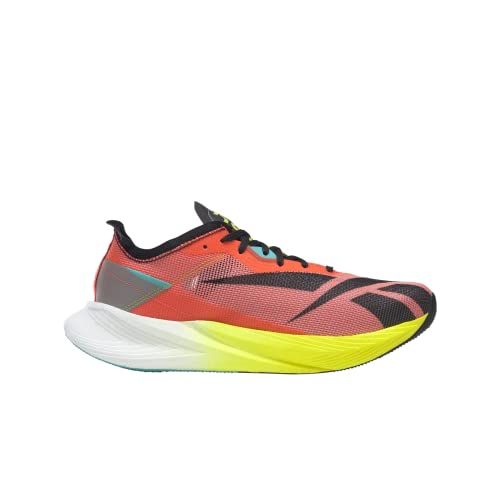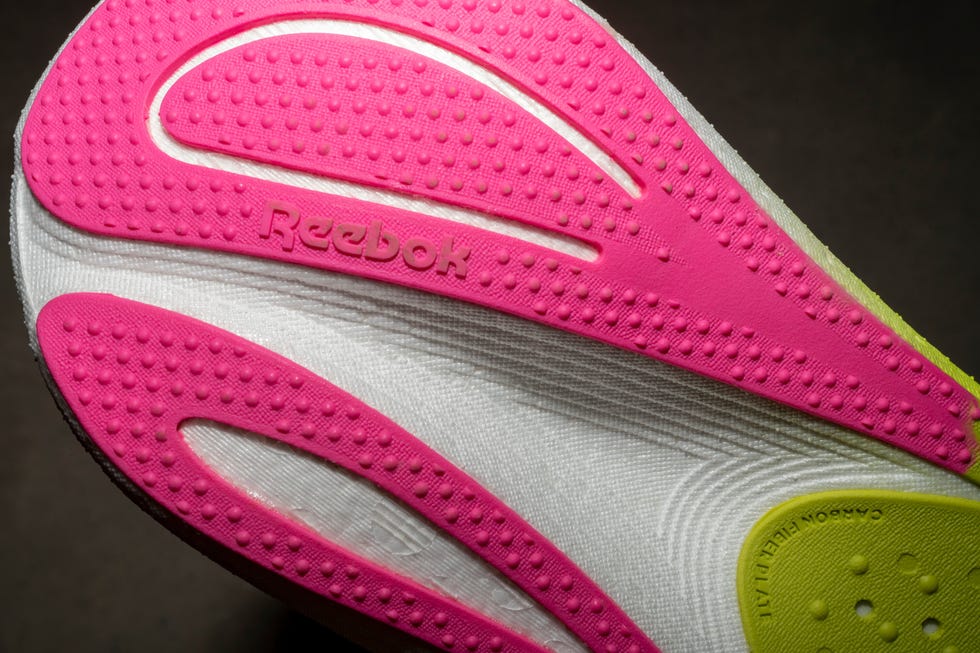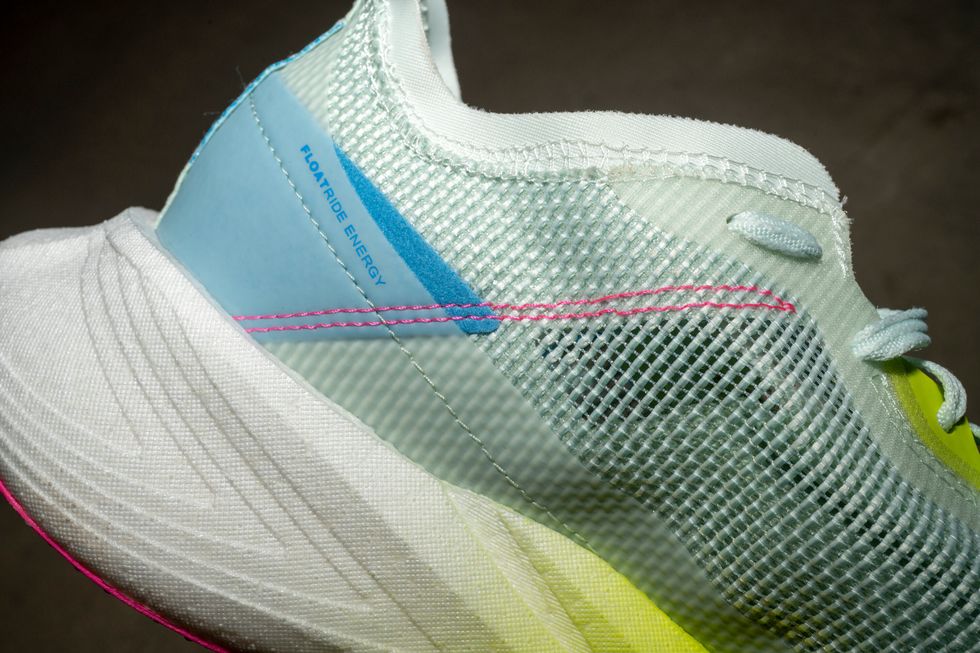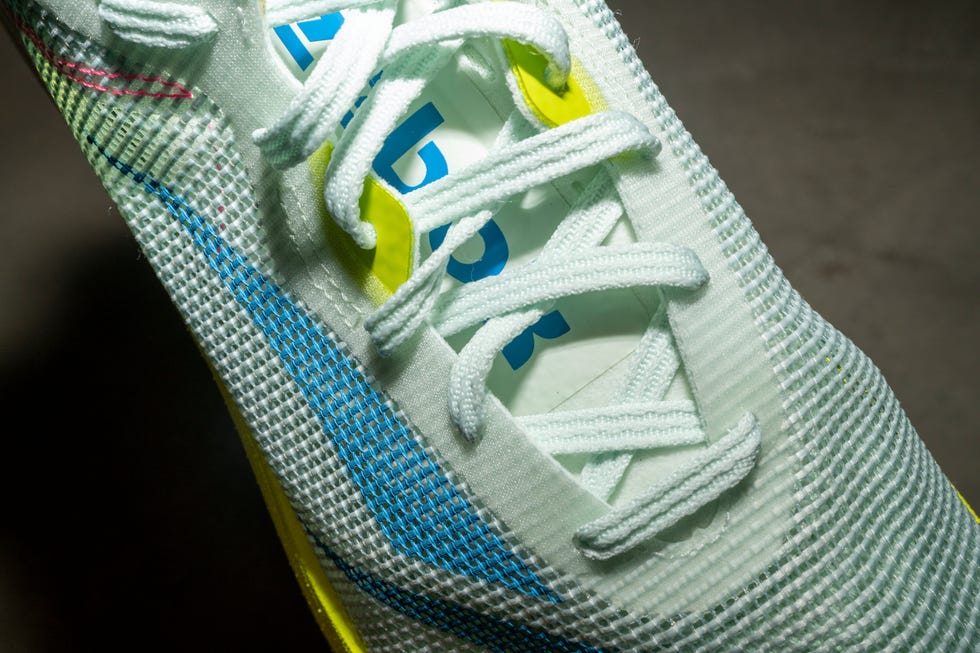The RW Takeaway: A more-affordable plated shoe that’s a speedy, training and racing hybrid for runners who aren’t super finicky about fit.
- Carbon-fiber plate at the forefoot, 30mm of Floatride foam at the heel
- Durable Flexweave upper has light collar padding and a gusseted tongue
- Currently only available in whole unisex sizes
Price: $170
Type: Road
Weight: 9.4 oz (M, unisex)
Drop: 6 mm
More From Runner's World

Your first time racing a new distance is a de facto PR. That’s worth celebrating, even if you’re eagerly scrolling the sign-ups for a chance to smash it the following weekend. That’s how Reebok’s first crack at a super shoe feels—a solid baseline with more good to come.
But before making any comparisons to other brands’ speedsters, it’s important to keep the playing field level. Reebok’s Floatride Energy X is designed for both training and racing, whereas most runners will only lace up an Alphafly as they head for a starting line. That much alone gives the Energy X more versatility. Factor in the much lower price point, and you’re looking at an impressive ratio of carbon fiber-plated miles per dollar.
Though the plate is only in the forefoot, it still has some pop at toe-off. It just feels more akin to backyard sparklers than Fourth of July fireworks. “The shoe isn’t quite as pillowy and energetic as the Vaporfly, but the cushioning is excellent. The stability and traction are better, and the energy return, which doesn’t seem quite as good, still enables this terrific shoe to deliver an energetic ride,” said one tester with 40 years of running experience in dozens of shoes across eight different brands.
Larger runners who typically crushed through very soft foams liked the slightly firmer ride of the Floatride Energy midsole. Made from steam-molded TPE beads, the foam let them experience a well-cushioned, high-stack shoe without instability. However, smaller runners like myself found the carbon-fiber forefoot too hard, even with a modest portion of bouncy Floatride+ foam in that area. (Floatride+ is Reebok’s slightly softer, more premium Pebax material.) For some, the Energy X will feel just a bit too harsh to go a full 26.2 miles. Personally, I’d prefer it for a half marathon.
It’s hard to argue with one tester’s blunt analysis of the Flexweave material Reebok uses for the upper—a woven “waxy, plasticky mesh reminiscent of foldable lawn chairs.” Surprisingly, it works. A soft internal gusset holds your foot inside, so only a small patch of that material actually comes into contact with your arch. And the cross-hatched open weave of those durable fibers keeps air flowing through the shoe. “The material doesn’t offer any stretch, which I prefer because I don’t like to feel as if my feet are sliding or stretching through the material,” the tester added.
That said, portions of the upper still feel like they’re in prototype phase—especially since the shoe is currently available only in full sizes. The padding around the collar creates a gap around the ankle, which makes it feel like you’re not totally locked in. It’s also fairly easy for rocks and dirt to lodge themselves within that crevice. More female testers had this issue than men, specifically citing a slight heel lift inside the shoe.
Another Tester’s Take
Calvin S. | Tester since 2021
Arch Height: Average | Pronation: Neutral | Footstrike: Forefoot
“My favorite part of this shoe is its bounce. It’s not as bouncy as Nike’s Vaporfly, but feels more stable. In Vaporflys, I feel like I’m almost on stilts and rounding corners can be difficult. These have much more stability and feel a lot more secure on turns. I’ve definitely worn trainers that have softer cushioning. However, this is no daily trainer. It’s definitely a mix between a racing and workout shoe—great for when I’m aiming to hit a quicker run or a longer workout without putting too much stress on my legs. I typically stay around a 7:00/mile pace, but I’d find myself cruising at 6:30 pace more effortlessly in these shoes.”


















